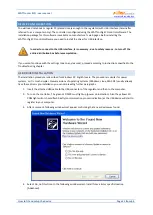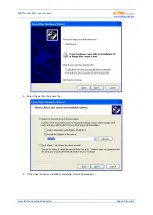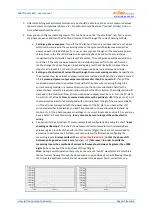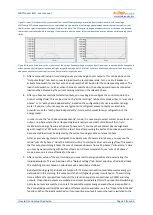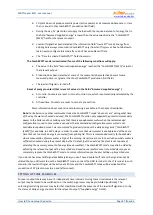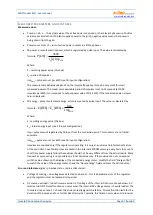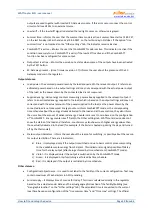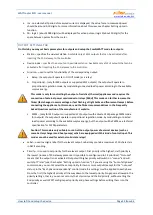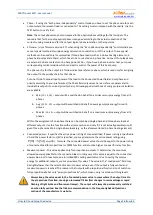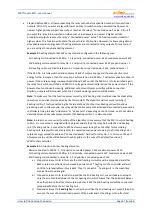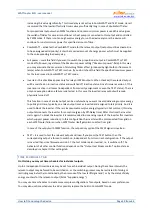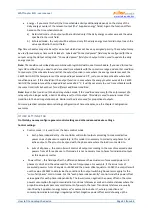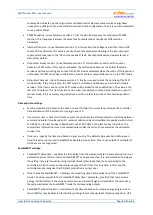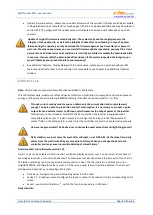
WATTrouter ECO - user manual
www.solarcontrols.cz
How to fit and setup the device
Page 34 from 66
Caution:
Use only external CTs for large facilities and large PV-plant power outputs. If you are using a
high conversion ratio of external CTs, you have to take into account that (relatively) small power
outputs (in the example describing the optimized conversion rate 400A:20A, the limit represents
approximately 0.75 kW per phase) are below the resolution capacity of the measuring inputs and
therefore, these power values will not be measured and equal to zero.
FB Input configuration
Energy starting offset - this field can be used to set initial values of measured energies. If the values of
measured energies do not match the display on the connected energy meter (for example), put the
value of the energy shown on the display into this column and reset impulse counters to zero by
marking the option "Reset energy".
Reset energy - used to reset energy counters to zero.
Number of impulses per one kWh – this column is used to set the number of impulses per one kWh.
Set the value according to the label or manual of the connected energy meter, inverter or according to
another compatible measuring instrument. It is recommended to use highest possible amount of
impulses per kWh to get better resolution for the FB power field.
Measurement source – use this to setup the energy data source for the FB input. Following options are
available:
a.
Unknown – input counts e.g. energy flowing to a load or another appliance.
b.
Prod. L1 – input counts energy measured on L1, value will be added to daily production stats
on L1.
c.
Prod. L2 – input counts energy measured on L2, value will be added to daily production stats
on L2.
d.
Prod. L3 – input counts energy measured on L3, value will be added to daily production stats
on L3.
e.
Prod. L1+L2 – input counts energy measured on L1+L2, value will be equally divided to daily
production stats on L1 and L2.
f.
Prod. L2+L3 – input counts energy measured on L2+L3, value will be equally divided to daily
production stats on L2 and L3.
g.
Prod. L1+L3 – input counts energy measured on L1+L3, value will be equally divided to daily
production stats on L1 and L3.
h.
Prod. L1+L2+L3 – input counts energy measured on all phases , value will be equally divided
to daily production stats on L1, L2 and L3 (i.e. counted value will be divided by 3).
Note
: If you measure PV production on several phases with an external three-phase electricity meter, whose S0
output is connected to the FB input, and the inverter does not always distribute the production evenly to all
phases, you must neglect the differences. If you want to be precise, you have to use 3 external single-phase
meters. , With WATTconfig ECO, however, you can display only one meter as only one FB input is available.
Input checking oscilloscope:
This graph is primarily used to check the correctness of ILx metering inputs settings or the FB input settings.
From the drop-down menu, select the input you want to check and follow the chart.
The oscilloscope will always display the events at the analog inputs of the WATTrouter microprocessor, which
will vary according to the assigned input:


